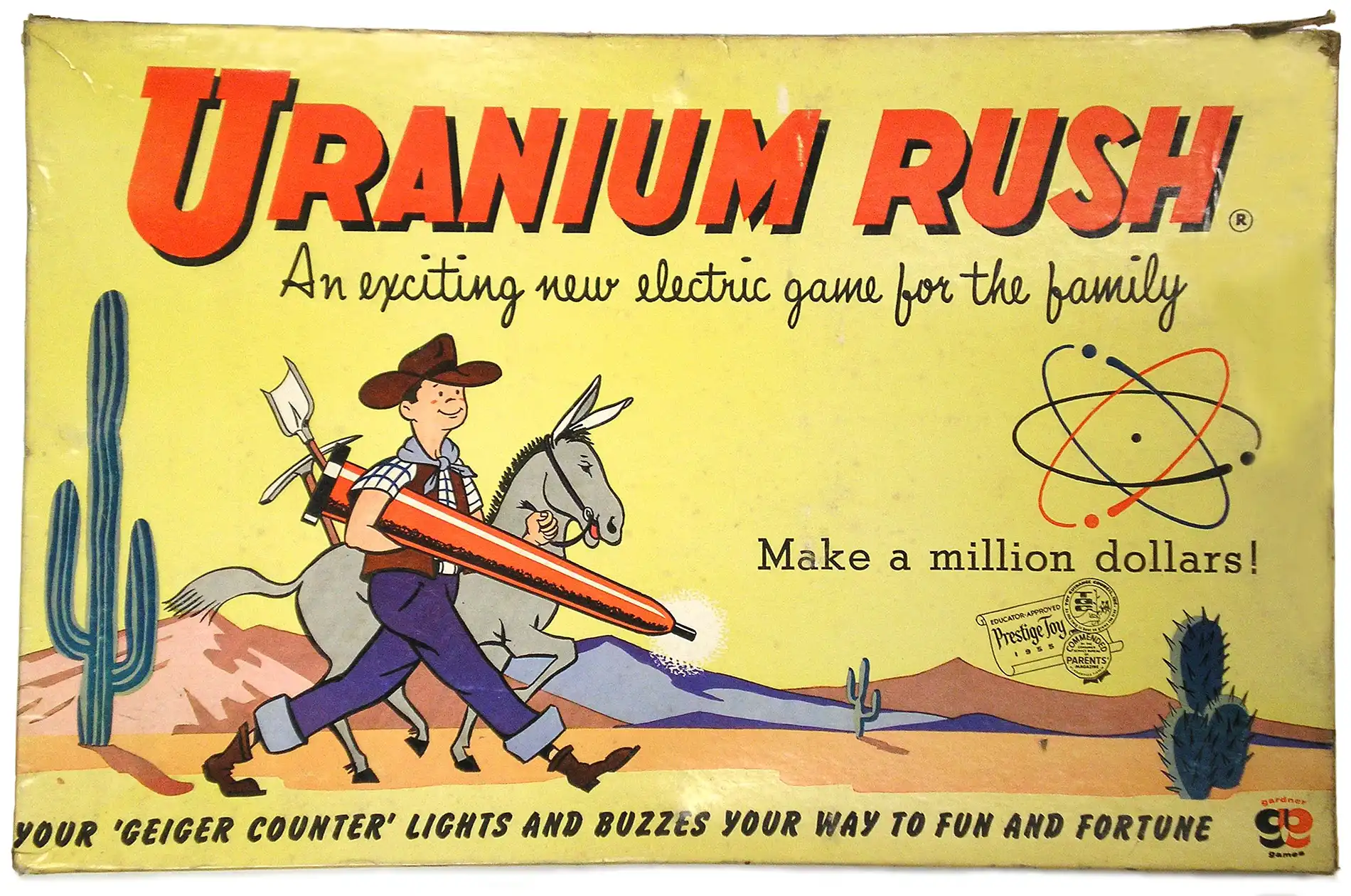 ORAU: Then & Now
Posts in Museum Category
ORAU: Then & Now
Posts in Museum Category
2025

The advancement of nuclear technology introduced hazardous challenges, especially to an uneducated workforce. To address the need to promote safe practices ORNL created a series of health physics posters in 1947 that would help instruct and promote a culture of safety.

Now that ORAU’s Museum of Radiation and Radioactivity is open to the public, you are invited to tour the collection. This blog introduces you to the museum curator and what’s in the collection!

This blog explains how hot springs, radium water and radioactive quack cures intersect.

Learn about some of the atomic board games located at ORAU’s Museum of Radiation and Radioactivity, including a couple surrounding the hunt for uranium in the 1950s.
Learn about the Radium water jugs located at ORAU’s Museum of Radiation and Radioactivity, including how the design changed over time.
Learn about the “Radium Dance” located at ORAU’s Museum of Radiation and Radioactivity, including where the music originated from.
Learn more about two items in ORAU’s Museum of Radiation and Radioactivity that are tied to the bombing of Hiroshima, rebar from the Aioi Bridge and an autographed photo of the Enola Gay crew.
The CD V-757 was used for lectures and demonstrations educating audiences on the best materials to protect against radiation exposure.
Learn about the Radium Boot Polish at ORAU’s Museum of Radiation and Radioactivity, including how the product got its name.
Learn more about the wall tile from Hiroshima located at ORAU’s Museum of Radiation and Radioactivity, including who donated the item.
We’ve already written about common household items that contain uranium on our blog, but uranium glass deserves its own post because it’s the most viewed item in ORAU’s online Museum of Radiation and Radioactivity. With so many page views, we decided to divulge more information about these products. Whether you’re generally curious, are looking for…
The oldest item in the ORAU Museum of Radiation and Radioactivity is actually prehistoric. Yes, there’s a radioactive dinosaur bone in our collection!
Fiestaware’s striking colors, particularly the iconic Fiesta red, were originally achieved with uranium oxide, making pieces radiantly unique. The use of uranium for this purpose, a practice halted and then altered due to World War II demands for atomic bomb production, underscores the blend of art and atomic science in these everyday items.
Discover some fun facts about the Boy Scout Atomic Energy Merit Badge at ORAU’s Museum of Radiation and Radioactivity, such as the requirements for the badge.
Toy trains were once used to move radioactive sources from one location to another to minimize human exposure to ionizing radiation.
Discover everything you need to know about the roof tile from Hiroshima located at ORAU’s Museum of Radiation and Radioactivity, including how it ended up in Oak Ridge.
Many household items and other common objects made during the 1950s and 1960s contained uranium. During this time period, the government was encouraging members of the public to hunt for uranium. The federal governments Atomic Energy Commission (AEC) sponsored the search and advertised fixed rates for uranium ore to go along with bonuses for new discoveries. As a result, you…
What’s the story behind this clunky medical tool? The size of the injection apparatus may catch your attention. It’s a far cry from what you’d see at a modern doctor’s office when you get a flu shot. That’s because this tool was not used for a routine vaccination. This was built to administer radiopharmaceuticals.
Learn about the contaminated tea at ORAU’s Museum of Radiation and Radioactivity, including how it became affected by radiation.
Learn about the light cover from Chernobyl located at ORAU’s Museum of Radiation and Radioactivity, including how it made its way back to the United States.
Discover some fun facts about the shoe-fitting fluoroscope at ORAU’s Museum of Radiation and Radioactivity, such as who all claims to have invented the machine.
Take a look at some of the atomic toys and items for children located at ORAU’s Museum of Radiation and Radioactivity, including the Atomic Energy Lab.
One of the eye-catching items in ORAU’s online Museum of Radiation and Radioactivity is a pair of atomic bomb test goggles. Yes, in our collection we house a pair of goggles that someone wore as the United States tested an early nuclear weapon.
The Nuke Buster is one of the incredible items in ORAU’s online Museum of Radiation and Radioactivity. It plugs into a car dashboard to electronically monitor radiation levels. How do hippies, communes and Nuke Busters intersect with ORAU? This blog explains.
In our museum’s collection, you will see a lot of different items that relate to fallout shelters because there was a period of time when the U.S. government grappled with the consequences of nuclear weapons and how citizens could respond if our enemies used the technology against us.
Discover some of the fun facts about the atomic movie posters at ORAU’s Museum of Radiation and Radioactivity, including where the ideas for the movies originated.